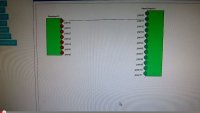osnwt
www.LinuxDrone.org
Here is a short list of what we've been doing now:
[*=left]All OpenPilot legacy code was finally removed. We will create a new fresh repository with our code soon.
[*=left]A work has been started on C++ system core classes for sensors, system bus, xenomai interfaces, etc.
[*=left]We have started a work on javascript web-based GCS (eGCS™). As noted before, we will have embedded GCS, no extra software will be necessary to setup and tune.
[*=left]Some work started on BSON and MongoDB integration for settings database.
[*=left]New repository will have new build system based on cmake. This should make easier to create makefiles and IDE projects for everyone on all development platforms.
[*=left]Now we can read and generate accurate PWM streams using PRU subsystem. This is the first step to offload the core processor and move some driver tasks to internal real-time units of Sitara processor.




